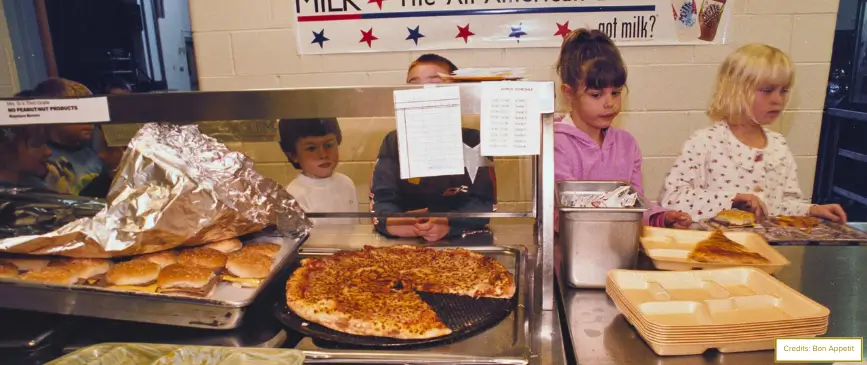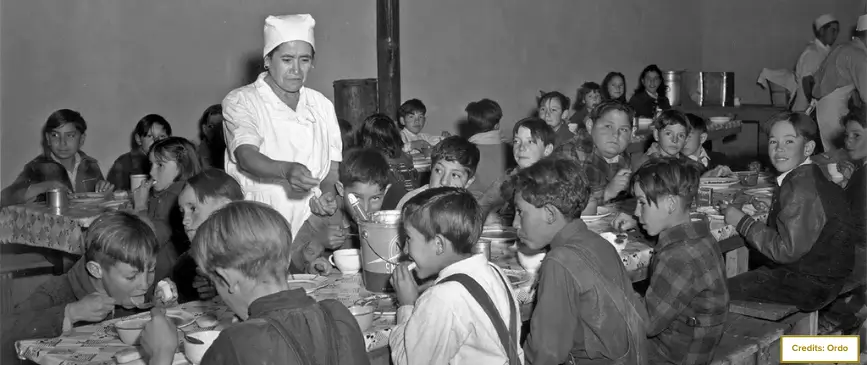Introduction
Have you ever wondered why private school cafeterias feel so different?
Whether it’s the cozy ambiance, healthy meals, or thoughtful design, these dining spaces aren’t just about food. They’re an EXTENSION of the school’s philosophy.
But what makes private school cafeterias unique and how do they create such a memorable experience? Let’s dive into this dining world that goes beyond satisfying hunger.
What are Private School Cafeterias and What Makes Them Unique?
Private school cafeterias are specially designed spaces where students gather to enjoy nutritious meals and snacks. Unlike the hustle and bustle of public school lunch areas these cafeterias focus on creating a positive culture in dining halls, combining comfort, health, and an engaging experience.
The meals served in these spaces reflect the school’s values, often emphasizing nutrition in private schools by incorporating organic, locally sourced ingredients. While public schools might have to prioritize quantity over quality, private schools take it a step further with diverse lunch menu options and specialized meal plans that cater to dietary needs like vegetarian, vegan, or allergen-free diets.
From school cafeteria workers trained in culinary arts to seasonal menus, private school cafeterias aim to elevate the dining experience.
Curious about the differences between public and private cafeterias? Keep reading!
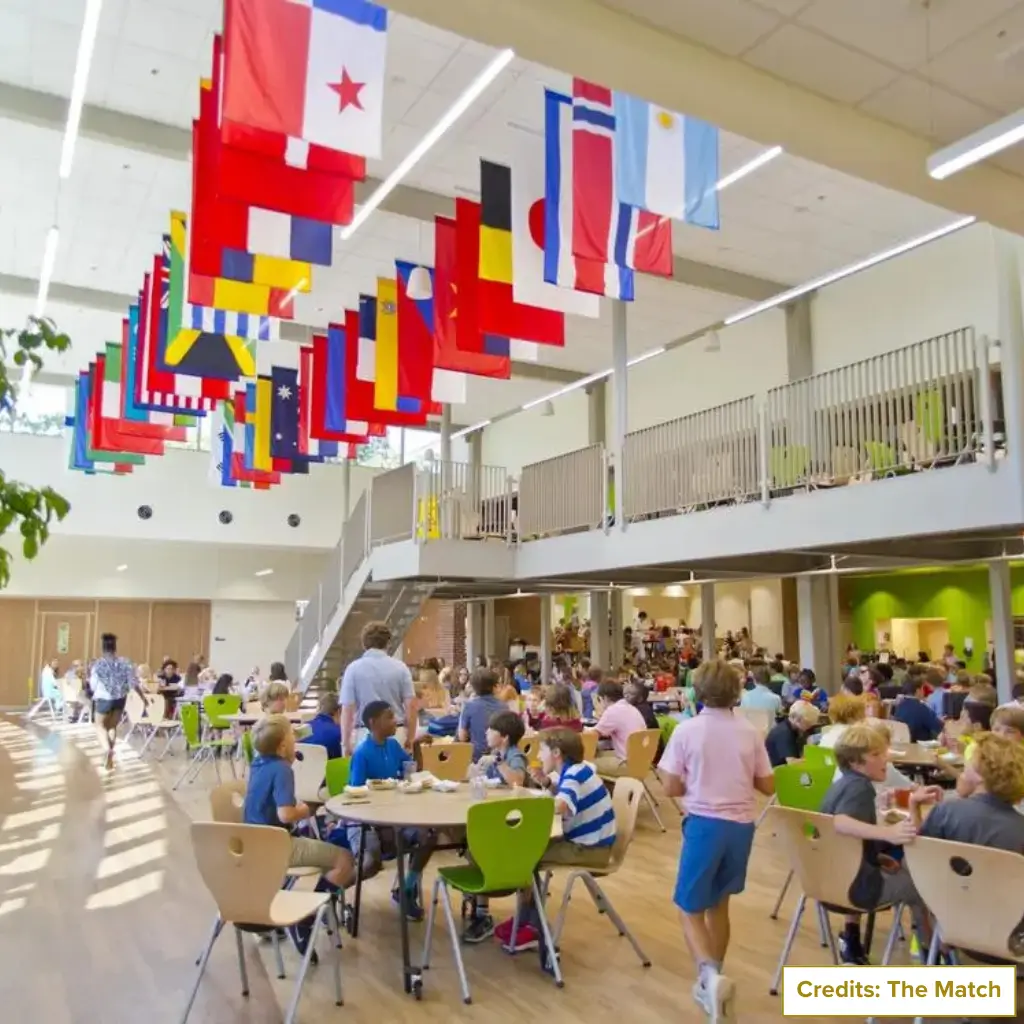
Top Features of a Great Private School Cafeteria
So, what sets private school cafeterias apart? Here’s a quick rundown of the standout features:
- High-Quality Ingredients: Fresh, organic, and locally sourced foods take center stage.
- Customized Menus: Tailored meal plans for specific dietary needs like gluten-free or allergen-sensitive options.
- Aesthetic Designs: Design plays a big role in everything from modern furniture to different types of cafeteria tables and seating arrangements that foster both socializing and studying.
- Sustainability Practices: Eco-friendly measures to reduce food waste and encourage responsible consumption.
- Tech Integration: Cashless payment systems, digital menu displays, and pre-order apps make everything seamless.
- Seasonal Decor: Whether it’s decorating the cafeteria at Christmas or embracing a summer theme, these spaces stay fresh and exciting.
These elements work together to create a cafeteria that feels less like a lunchroom and more like a welcoming community space.
How do Private School Cafeterias operate?
Running a private school cafeteria isn’t just about cooking food. It requires careful planning, adhering to high standards, and creating a safe, enjoyable environment. Like public schools, private cafeterias must comply with government mandates and pass regular school cafeteria health inspections. These inspections cover food safety, storage, temperature checks, and sanitation, prioritizing students’ health.
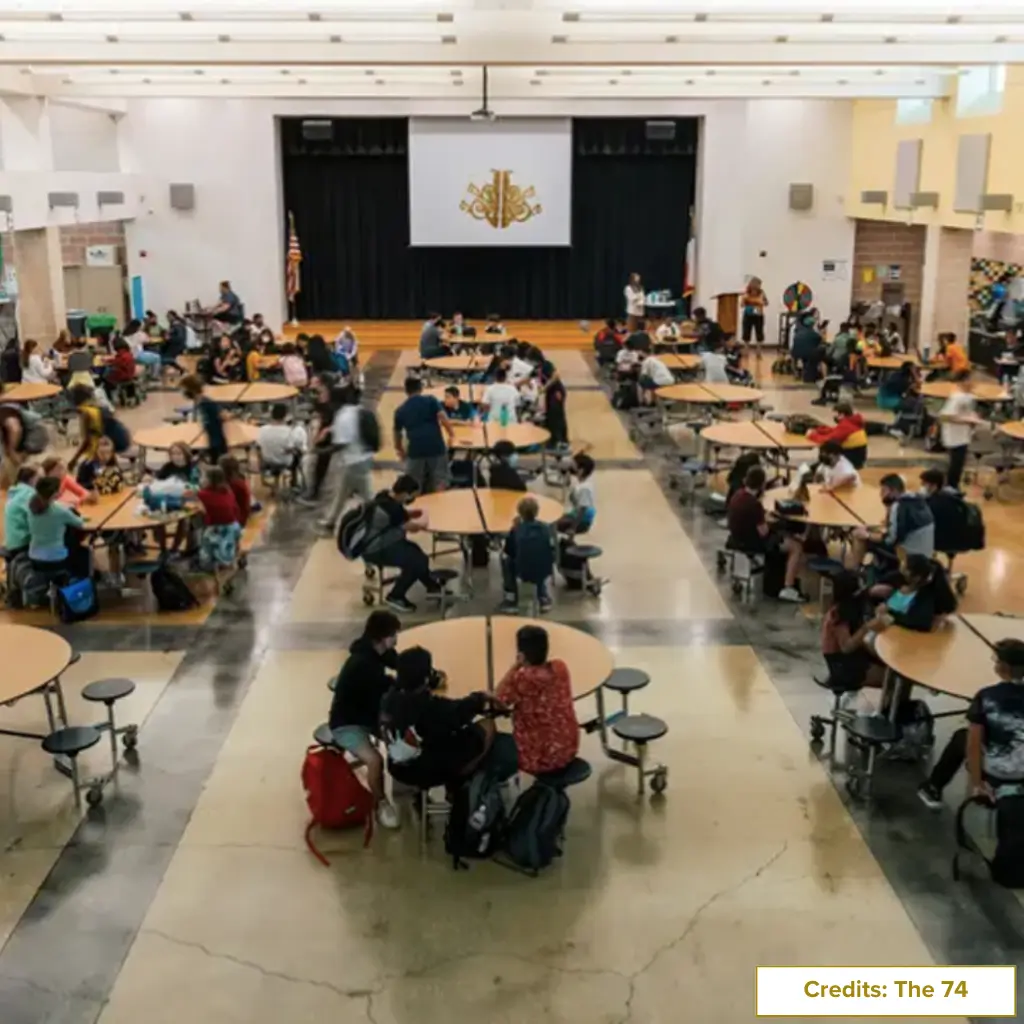
Interestingly, some private schools incorporate programs like the National School Lunch Program for schools, ensuring meals meet rigorous nutritional standards. Beyond meals, many cafeterias operate cashless systems, making transactions simple for parents and students.
Staff training is another cornerstone. Cafeteria workers are trained in culinary trends and safety measures, ensuring every dish served is delicious and safe. And yes, those enticing post-school snacks for extracurricular students are part of the thoughtful planning that makes private school cafeterias special.
The Philosophy Behind Private School Cafeteria Design
Building a school is a challenge, but designing a private school cafeteria? That’s where functionality meets creativity. It’s about crafting an environment that encourages learning, supports health, and fosters community.
Private schools often invest significant thought and resources into designing cafeterias beyond the basics. By working with cafeteria design experts, they create spaces that are comfortable, inclusive, and aligned with the school’s values.
Here are some key elements private schools prioritize when designing modern cafeterias:
- Student-Centric Spaces: Comfortable seating and areas for both socializing and quiet time.
- Healthy Food Support: Salad bars and designated zones for food allergens.
- Ambiance: Natural light, calming colors, and wall art for lunch rooms that inspire creativity.
- Noise Management: Strategic layouts and soundproofing to manage noises.
- Sustainability: Eco-friendly materials and practices, such as composting and energy-efficient appliances promoting green living.
- Flexibility: Spaces that can adapt for study, group projects, or events beyond meal times.
Ultimately, designing a cafeteria isn’t just about aesthetics. It’s about creating a space where students feel comfortable, supported, and connected and reflects the school’s commitment to their overall development.
Whether you’re envisioning a completely new design or refreshing your current cafeteria, we specialize in bringing these principles to life. From layout to graphics, we create spaces that are as functional as they are inspiring.
Want to see our outstanding work? Click here to explore more!
Or
Hire our cafeteria graphics services right here!
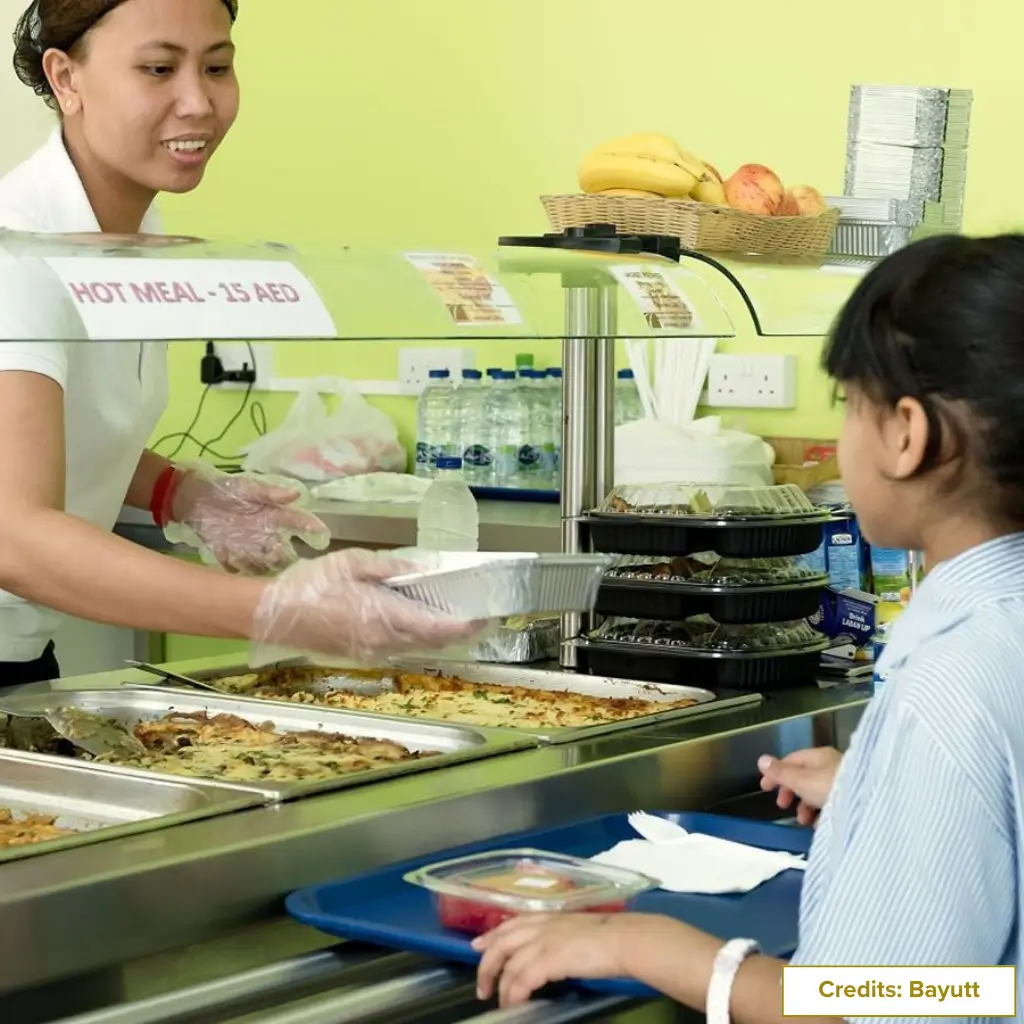
Private vs. State-Run School Cafeterias: Key Differences
While both types of cafeterias serve the same purpose, private school cafeterias go the extra mile to deliver a more personalized experience.
Here’s a quick comparison:
| Aspect | Public School Cafeterias | Private School Cafeterias |
| Scale of Operations | Larger, serving more students | Smaller, serving fewer students |
| Funding | Government-funded, tight budgets | Privately funded, more flexibility |
| Menu Variety | Standardized options | Diverse, customized menus |
| Food Sources | Bulk purchasing contracts with approved vendors | Freedom to source from local farms, organic suppliers, or specialty providers |
| Nutrition Standards | Must adhere to strict government guidelines | Can exceed government standards based on school policies |
| Extracurricular Ties | Limited integration with other programs | Menus may tie into educational themes, events, or cultural diversity initiatives |
| Student Feedback | Less influence on menu planning | Actively incorporates student and parent input |
| Dietary Customization | Limited due to constraints | High flexibility |
| Dining Experience | Functional | Elevated and engaging |
The ability to focus on quality, creativity, and customization makes private school cafeterias a cut above the rest.
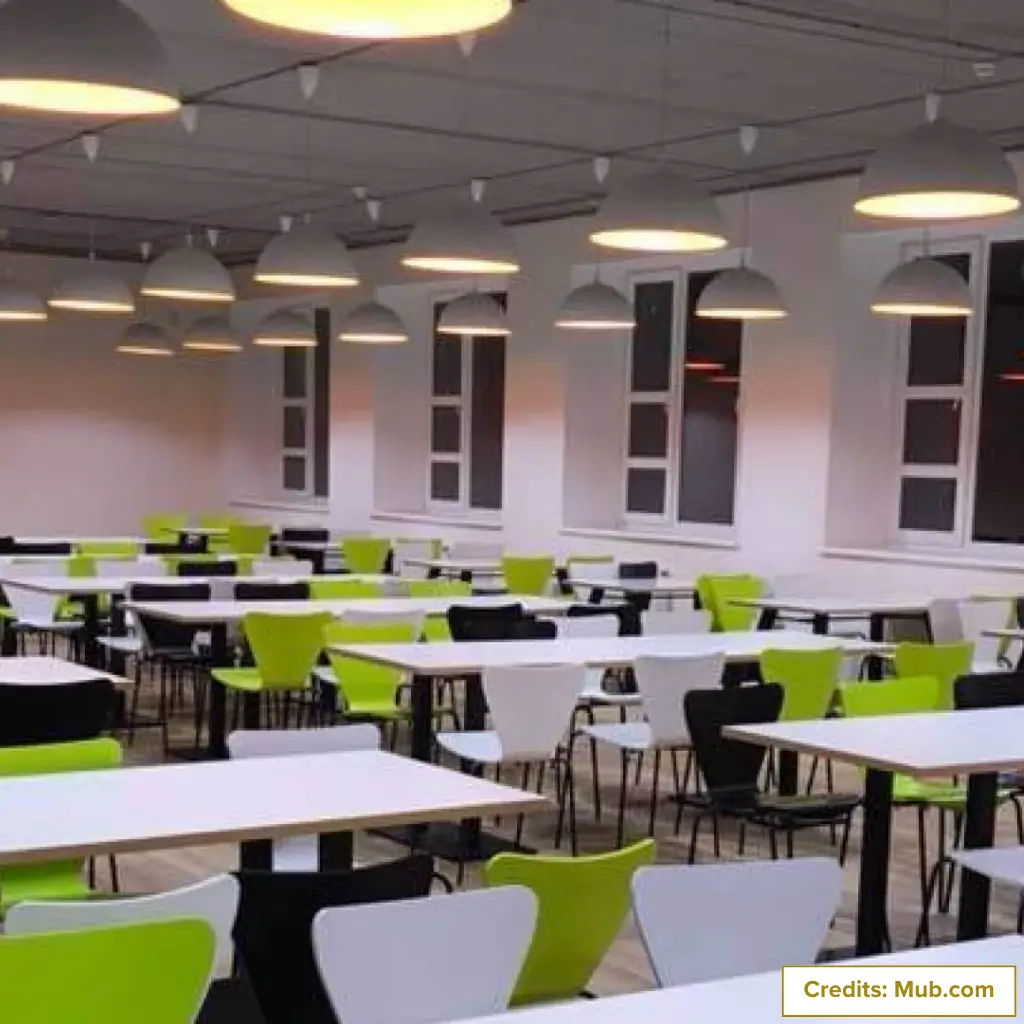
The Resources Behind Private School Cafeterias
Ever wonder how private school cafeterias maintain such high standards? It’s all about leveraging resources like:
- Skilled Staff: Professional chefs and certified nutritionists.
- Financial Investments: Higher budgets for decor, advanced equipment, and premium ingredients.
- Community Involvement: Partnerships with local farms and food suppliers.
- Technology: Digital ordering systems and nutritional tracking software.
- Student Input: Feedback loops to keep the cafeteria in tune with its diners.
Furthermore, some schools even have hydroponic gardens or outdoor cafeterias to connect students with the food they eat. These resources enable private schools to offer dining experiences that are both educational and enjoyable.
Creative Ideas to Improve Private School Cafeterias
Transforming your school’s cafeteria doesn’t have to be overwhelming. Small changes can make a big difference in creating a space students look forward to visiting daily. Here are some easy-to-implement ideas to get started:
- Seasonal and Cultural Decorations: Switch up the cafeteria’s look throughout the year to keep it fresh and engaging. In the fall, add pumpkins, autumn leaves, and warm colors. For holidays like the Lunar New Year, use red lanterns and dragon decorations to celebrate cultural diversity and make students feel included.
- Showcase Student Artwork: Give students a chance to shine by displaying their artwork on the walls or as hanging installations. This personal touch beautifies the space and gives students pride and ownership in their cafeteria.
- Interactive Chalkboards and Bulletin Boards: Install chalkboards, whiteboards, or bulletin boards in the school cafeteria where students can draw, write positive messages, or share fun facts about food and health.
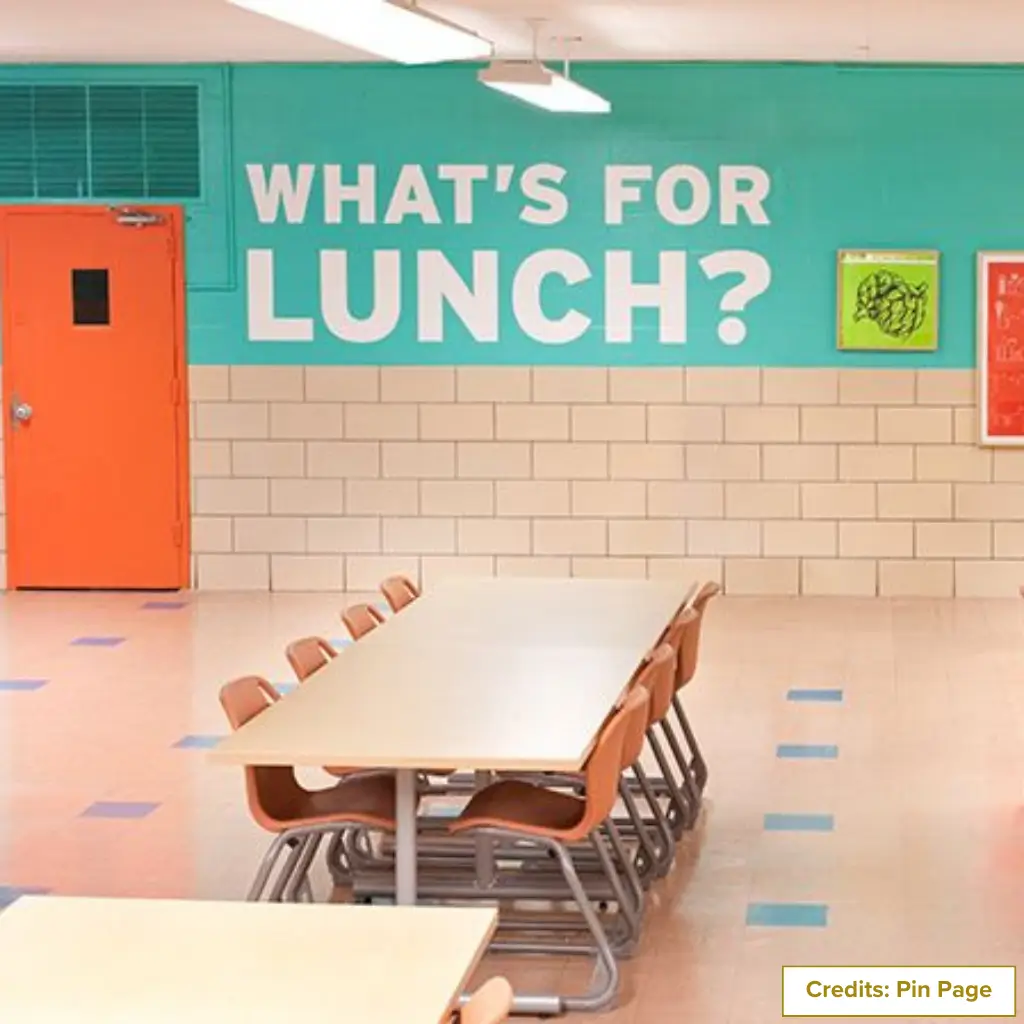
- Healthy Eating Inspiration Boards: Set up colorful bulletin boards filled with tips for healthy eating, fun food facts, and motivational quotes. Decorate them with pictures of fruits, vegetables, and other nutritious foods to make the message fun and engaging.
- Color-Coded Zones: Create distinct areas in the cafeteria to suit different needs. Use calming blues and greens for students who prefer a peaceful meal and brighter colors like orange and yellow in social areas to encourage conversations and energy.
- Interactive Digital Menus: Upgrade your menu displays with digital screens that show daily options with fun illustrations. This makes it easier for students to decide what to eat and adds a modern, engaging touch.
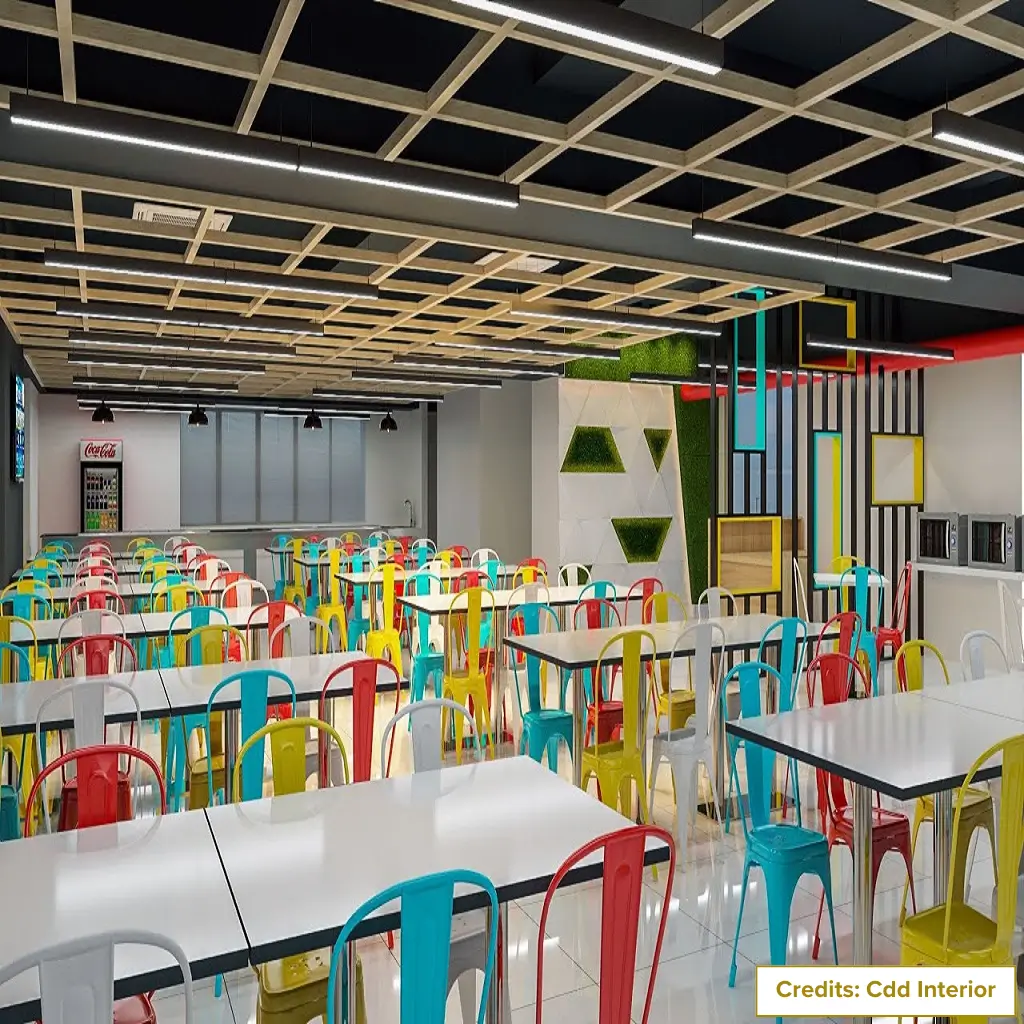
- Healthier and Sustainable Food Options: To encourage healthy eating habits, offer more fresh fruits, vegetables, and plant-based dishes.
- Student-Run Cafeteria Programs: Form a student committee to help plan menus and provide feedback on cafeteria offerings. Giving students a voice makes them feel heard and ensures the cafeteria reflects their preferences.
- Periodic Renovations: Plan a complete renovation every 3-5 years to keep the cafeteria space fresh and engaging. This could include updates to furniture, color schemes, lighting, and technological upgrades to improve the overall experience.
For specific tips on designing cafeterias for different private school levels, explore our blogs:
- Middle School Cafeterias Layout
- Functional High School Cafeterias
- Designing Elementary School Cafeterias
Conclusion
Hence, in a nutshell, private school cafeterias are vital contributors to a balanced student experience. They offer more than nourishment, serving as places of engagement, community, and growth. By embracing sustainable practices and focusing on diverse, wholesome meals, private schools can turn their cafeterias into meaningful extensions of their educational mission.
FAQs
Are private school cafeterias more sustainable than public ones?
Private schools often prioritize sustainability through composting, recycling, and using eco-friendly materials.
Are the meals in private school cafeterias healthy?
Many private schools focus on providing nutritious meals that meet health guidelines. They prioritize fresh ingredients, balanced portions, and options to promote students’ well-being.
Are private school cafeteria meals more expensive than public schools?
Generally, private school cafeteria meals can be more expensive than public school meals, as private institutions often prioritize higher-quality ingredients, sustainability, and a wider range of meal options.

